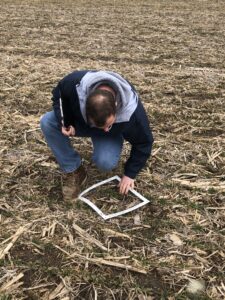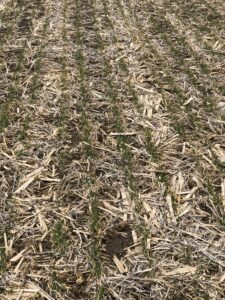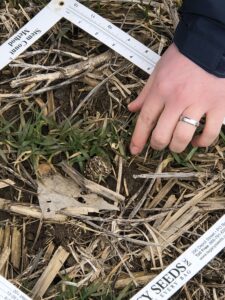Wheat Stand Assessment
By Jan Motz | March 14, 2023
DF Seeds offers top wheat products for Michigan
A critical part of wheat management is assessing your current stand. As the snow starts to melt, you will start to see your wheat green up. Key questions to ask when evaluating your wheat stand:
- When did you plant your wheat last fall?
- How tall was your wheat and how much tillering occurred before a killing frost?
- How even is the stand and is there a need for additional herbicides?
- How much fertilizer was applied last fall?
- How much snowfall did you receive over the winter?
In-season management
All these things impact the stand. Then consider these questions for in-season management:
- What price and how many bushels have you contracted for delivery?
- What price and how many bushels have you contracted for your other crops on your farm?
- What price did you pay for your fall fertilizer and have you priced spring nitrogen?
Scouting your field

All these factors play a part in the value of your wheat crop. Now it’s time to get to the field and scout the whole field, not just the headlands.
- Measure 3 feet of each row. This helps to take the variability of the wheat crop into account.
- Count and record the number of plants, including tillers. Tillers will develop a seed head and will help you adjust nitrogen application timing.
- Divide by 3 to calculate the average number of plants per foot.
- Repeat in 3 to 5 locations per field. Don’t just evaluate the best areas of the field! Get a representative sample as the combine will cover the whole field.
Plant stand counts for four row spacings and their relation to percent of yield potential. Adapted from Table 3-4 of the University of Kentucky Extension Bulletin ID-125, “A Comprehensive Guide to Wheat Production in Kentucky.”

Additional considerations
Other aspects of your wheat crop you want to consider are:
- Reducing soil erosion through the winter months as it captures rain and scavenges for nutrients.
- Build your soil organic matter especially if you don’t harvest the straw and minimize tillage.

- Weed, insect and disease pressure management with different crop growth seasons from corn and soybeans.
- Crop diversification helps you manage your overall risk.
- Labor distribution throughout the season.
At the Michigan Wheat Growers Annual Meeting, part of the presentation by Jeff Andresen, MSU Meteorologist, mentioned that with theweather events we have been experiencing in Michigan, we are getting fewer days to get field work done in the spring and fall. He also noted that several research trials are showing the significance of planting date compared to expected yield. Before you decide to tear up your wheat, consider that condensed timeline. Your time is valuable and the earlier you get the crop planted, the greater the yield potential. If you do decide to tear up your wheat, DF Seeds has Enlist E3™ and non-GMO soybeans from 1.5 to 2.8 maturities. We also have corn hybrids as early as 78-day maturity available. TriCal® Superior Forage triticale may also be an option if you need livestock feed.
Contact us to plan your customized forage solution.


